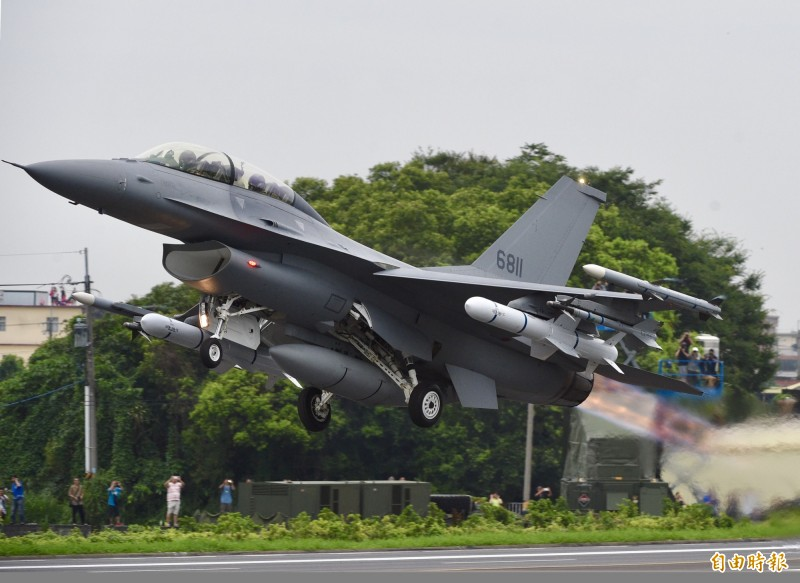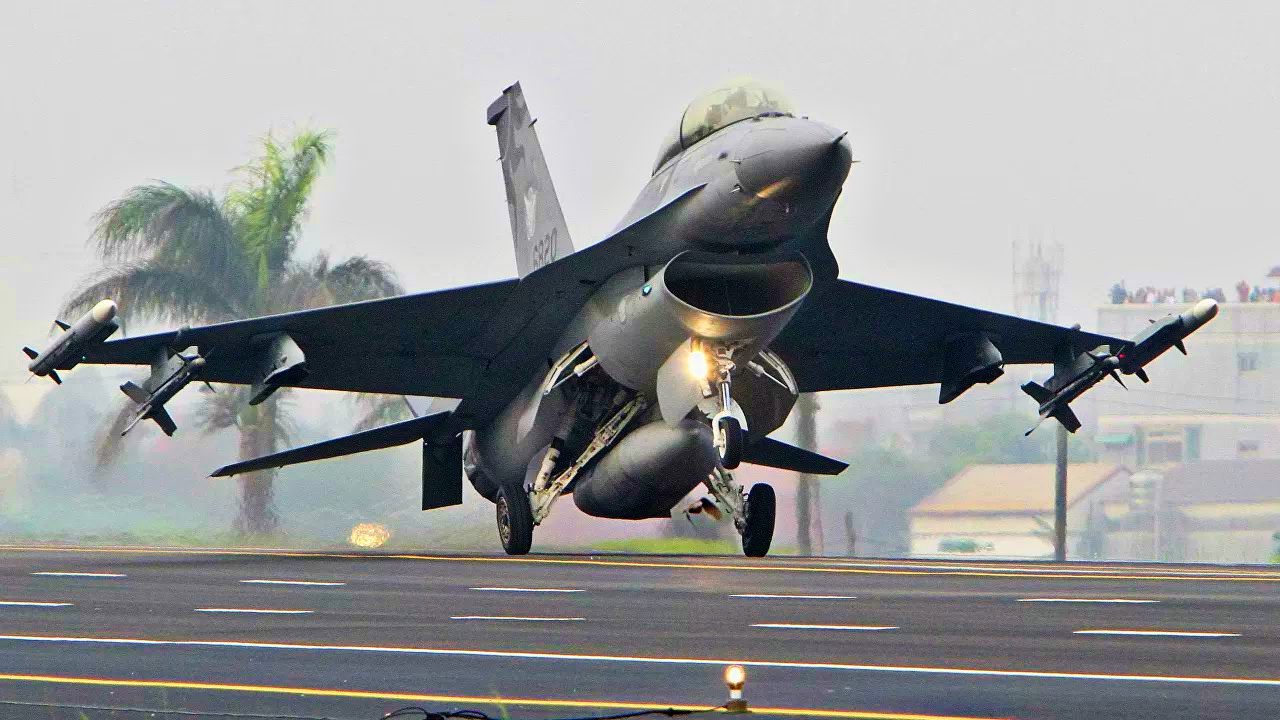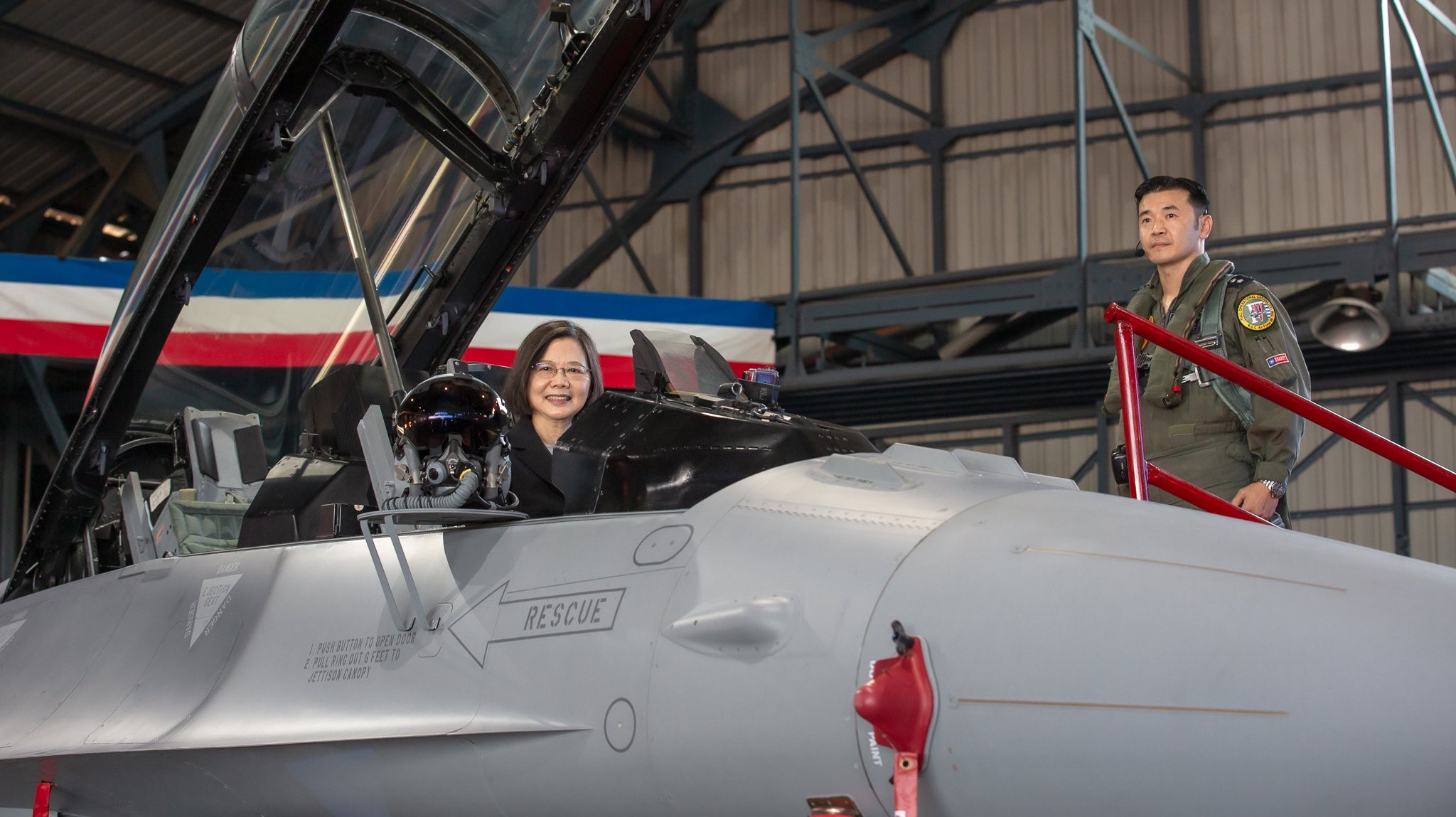As China’s military bares its fangs by flying its modern fighter jets all around Taiwan, the self-governed island nation now seems to be readying its most advanced F-16 Vipers, fully armed with missiles, to take on the dragon.
Russia Assures Swift Delivery Of ‘UPGraded’ MiG-29 Fighters To India After France Delivers All 36 Rafales
China began extensive military exercises after US House Speaker Nancy Pelosi visited Taipei on August 2-3. These extensive drills included launching missiles over Taiwan while sending warplanes across the Taiwan Strait’s median line.
On August 17, Taiwan’s Ministry of National Defense hosted a press event at the Fifth Tactical Mixed Wing of the Air Force in Hualien. It demonstrated the configuration of Harpoon anti-ship missiles and AIM-120 mid-range air-to-air missiles for F-16V jets.
An officer described how the missiles’ weight should be equal on both sides of the jet to keep the balance and how missiles closest to the plane’s body should be installed before those on the outside, reported Taiwan-based CNA.
While criticizing China’s actions, Sun Li-fang, a spokesman for the defense ministry, told reporters at the base that this was an excellent opportunity for Taiwan’s forces to enhance their capabilities.
China Is Pushing India Towards QUAD Alliance As PLA Navy’s ‘Wangling Warship’ Docks In India’s Backyard – Top Commander
Bloody Tuesday! Russia’s Crimean Peninsula Rocked By Another Explosion On Another Tuesday; Is There A Trend?
“We will seize this opportunity to test all the training we normally do, and through this improve our current methods and raise our combat effectiveness,” he said. Li-fang continued, using Taiwan’s official name, “the Republic of China’s forces are confident, capable, and determined to defend the safety of the Republic of China.”

The Hualien base, which has hangers carved out of a mountainside, has two pilots on duty at any given time, sitting in their flight suits and ready to take off in six minutes.
The Ministry of National Defense announced that it had tracked 21 Chinese military aircraft and five ships around the country by 5 p.m. on August 17. Five of the 21 warplanes of the People’s Liberation Army Air Force (PLAAF) reportedly crossed the median line over the Taiwan Strait.
The aircraft included a Shaanxi Y-8 anti-submarine warfare (ASW) aircraft, two Sukhoi Su-30 fighters, and two Shenyang J-11 jets. The ministry claimed it sent out Combat Air Patrols (CAP), Navy ships, and land-based missile systems to track and react to Chinese movements.
The EurAsian Times previously reported that the Hualien Air Force Base in Taiwan had prepared four fully stocked F-16V fighters, each carrying two air-launched anti-ship harpoon missiles, to defend the country’s east coast.
The anti-ship harpoon missiles have been hailed as essential to Taiwan’s F-16V’s capabilities to counter Chinese fighter jets.
The Harpoon (RGM-84/UGM-84/AGM-84) is a subsonic anti-ship cruise missile that has been in use since 1977. Since its inception, multiple variations have been created, including versions that can be launched from a ship, an aircraft, or a submarine.

Can F-16Vs Prove Effective In Battling China?
Taiwan is converting 141 F-16A/B jets into F-16Vs and has ordered 66 new F-16Vs with upgraded avionics, weapons, and radar systems to compete with China’s Air Force, including its J-20 stealth fighters.
The F-16Vs can be equipped with Raytheon Technologies Corp’s advanced AIM-9X Sidewinder air-to-air missiles. However, there is a significant difference between the Air Forces of Taiwan and China.
China has approximately 1,500 fighters in its arsenal, and Taiwan has nearly 400 jets, including aging F-5s and Mirage 2000s, locally-made F-CK-1s, and US-supplied F-16s.
Even so, the experts believe that the modernization of the Taiwanese Air Force comes at a time when fighters are becoming less important in Taiwan’s defense strategy.
In an article for War on the Rocks published in 2018, Drew Thompson described Taipei’s new strategy. He underscored how, in 2018, Taiwan’s then-chief of the general staff, Adm. Lee Hsi-ming, quietly suggested the Overall Defense Concept, a radical new strategy for Taiwan’s defense.

If successfully implemented, this new strategy could reverse the situation and give Taiwan a chance to stop China from annexing it by force. Taiwan’s new defense concept employs an asymmetric defense strategy to maximize its defensive advantages and hit an invading force when it is most vulnerable.
The Taiwanese Air Force will probably use integrated air defenses, such as Patriot PAC-3 batteries and homemade Tian Kung-2 surface-to-air missiles, to keep Chinese fighters, bombers, and drones out of Taiwan’s battlespace.
Fighters may not even be the most crucial component of this new approach. Nevertheless, Thompson believes they could be crucial by launching anti-ship missiles at Chinese invasion ships. But, few aircraft are likely to survive China’s initial bombardment of Taiwan’s airfield.
Nitin J Ticku, a defense expert and managing editor of the EurAsian Times, says that with almost 200 F-16 Vipers in the arsenal (after all the upgrades), not too many air forces can challenge Taiwan in the air.
F-16s are one of the most advanced 4++gen fighters with proven combat capability, and even the US is keen to retain them as core fighters.
F-16s have an enviable kill ratio against Russian-origin fighters, most of which China operates. If Taiwanese Vipers survive the initial onslaught, they would prove lethal against both the Chinese Air Force and Navy as F-16s are also equipped with deadly anti-ship Harpoon missiles.
- Contact the author at ashishmichel@gmail.com
- Follow EurAsian Times on Google News




